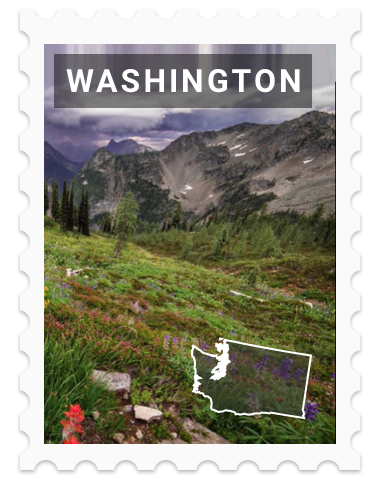Destination List > Olympic National Park
Olympic National Park
Photo by U.S. Forest Service- Pacific
Kid Rating:



The history...
Olympic National Park is a United States national park located in the State of Washington, on the Olympic Peninsula. The park has four regions: the Pacific coastline, alpine areas, the west-side temperate rainforest, and the forests of the drier east side. Within the park there are three distinct ecosystems, including subalpine forest and wildflower meadow, temperate forest, and the rugged Pacific coast.
President Theodore Roosevelt originally designated the park as Mount Olympus National Monument on March 2, 1909. The monument was re-designated a national park by Congress and President Franklin Roosevelt on June 29, 1938. In 1976, Olympic National Park was designated by UNESCO as an International Biosphere Reserve, and in 1981 as a World Heritage Site. In 1988, Congress designated 95 percent of the park as the Olympic Wilderness.
The park provides habitat for many species (like the Roosevelt elk) that are native only to the Pacific Northwest coast. As a result, scientists have declared it a biological reserve and study its unique species to better understand how plants and animals evolve. The park is home to black bears and black-tailed deer. The park also has a noteworthy cougar population, numbering about 150. Mountain goats were accidentally introduced into the park in the 1920s and have caused much damage on the native flora. The NPS has activated management plans to control the goats. The park contains an estimated 366,000 acres (572 sq mi; 1,480 km2) of old-growth forests.
Prior to the influx of European settlers, Olympic's human population consisted of Native Americans, whose use of the peninsula was thought to have consisted mainly of fishing and hunting. However, recent reviews are pointing to much more extensive tribal use of especially the subalpine meadows. Most if not all Pacific Northwest indigenous cultures were adversely affected by European diseases (often decimated) and other factors. Large numbers of cultural sites are now identified in the Olympic mountains, and important artifacts have been found.
When settlers began to appear, logging became a fast growing industry in the late 19th and early 20th centuries. Public dissent against logging began to take hold in the 1920s, when people got their first glimpses of the clear-cut hillsides. This period saw an explosion of people's interest in the outdoors; with the growing use of the automobile, people took to touring previously remote places like the Olympic Peninsula.







